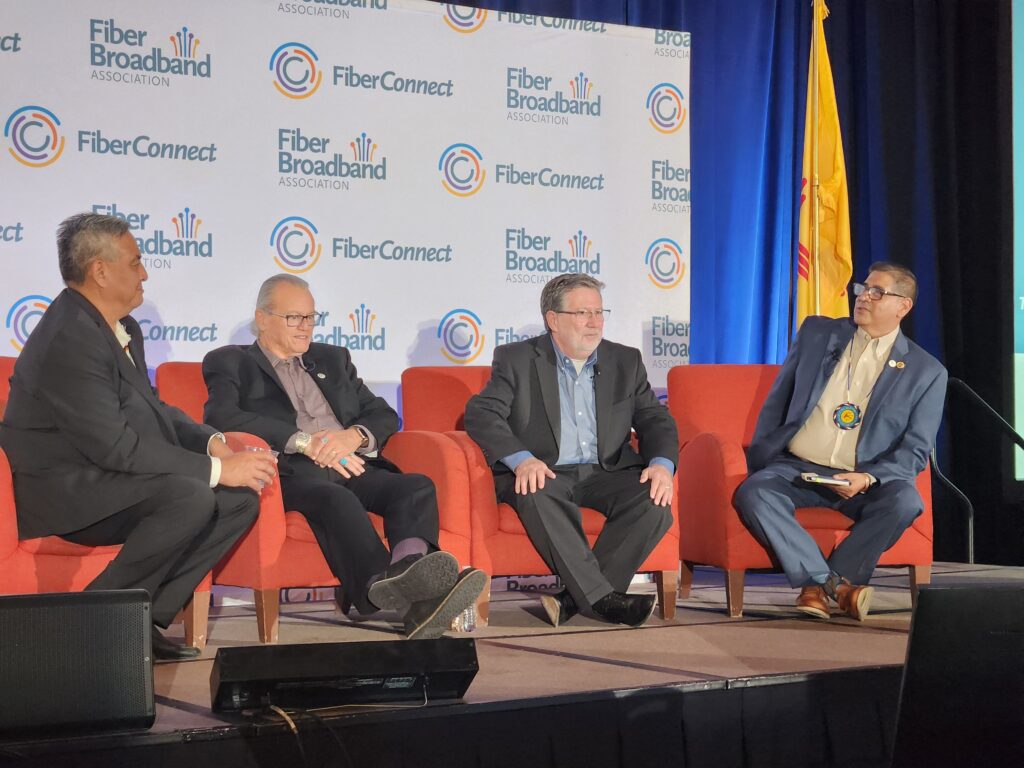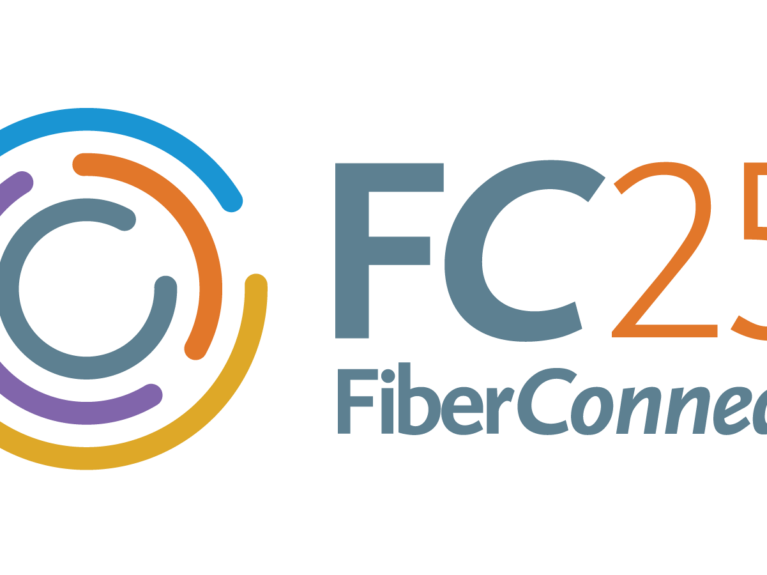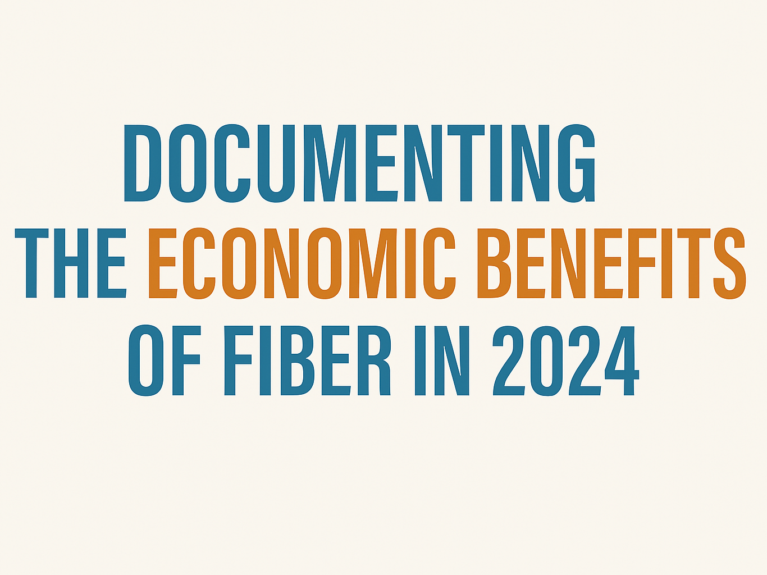Shared Wisdom for Successful Tribal Broadband Initiatives
There are many challenges to building successful Tribal broadband programs, including deploying fiber across large remote areas, the importance of proper vendor selection, contract management, building a sustainable business mode, and being able to have sovereign possession of network infrastructure. Held on November 7, 2024, the Regional Fiber Connect in Albuquerque, New Mexico, examined the many issues indigenous nations have and continue to face in provisioning and operating broadband networks on their lands.
The last panel of the day brought together representatives from the Navajo Tribal Utility Authority (NTUA), Osage Nation, and Mescalero Apache Telecom to discuss the unique requirements of building networks on Tribal lands, key factors for stakeholder and vendor partnerships, and how each sees fiber broadband impacting their people in the years to come. Robert Griffin, Tribal Broadband Leader for the Choctaw Nation and Co-Chair of the Fiber Broadband Association’s Tribal Committee, moderated the panel and was quick to underline the depth of experience that the panel participants brought to the discussion.
“Did I tell you these gentlemen know where the bodies are buried?” joked Griffin. “They dug them up and buried them again, right?”
With operational fiber networks on their respective lands, all the representative tribes were leveraging access to high-speed, low-latency broadband to substantially improve the social and economic lifeblood of their Nations. The fiber infrastructure supports a variety of projects to improve government services, reduce costs, and preserve and protect a way of life.
“Today, we are fully fiber to the home,” said Godfrey Enjady, General Manager, Mescalero Apache Telecom and President of the National Tribal Telecommunications Association (NTTA). “We have 10 Gbps XGS-PON to every home on the reservation. I got a middle mile grant to build a 288 [strand] fiber all the way to El Paso. We are building a brand-new data center. We put in a brand-new SCADA system for the whole tribe. Part of what I’ve been working at is about smart Tribal nations and how could that help Tribes going forward, especially with digital inclusion, digital equity.”
In addition, Mescalero is building towers to support a FirstNet first responder cellular network for tribal law enforcement officers and the tribal Emergency Operations Center. The SCADA system has automated water and sewer operations on the reservation for the first time.
But broadband’s ability to do more than simply improve government operations was also highlighted. “The other part of that too is the fact of language and cultural preservation,” said Enjady. “That’s something that really is a new tool for tribes to be able to try, because if we lose our language, we could lose our status as being a tribe. How do we preserve that? The other part is trying to get kids to understand what the culture is, because they’re all stuck in TikTok, they’re stuck in Facebook.”
Another speaker views broadband as a necessity due to its far-reaching impact upon daily life, from education to telehealth and remote work.
“I think you struggled to find an area that’s not impacted by it, because I think it touches everything in our lives,” said Dr. Jim Trumbly, Tribal Business Development Manager, Tribal Ready and a member of the Osage Nation. “By having the connectivity within the Osage Nation or [Indigenous Nations] in general, you enable people to move back, embrace their culture, embrace their language and at the same time work and be productive in the modern society, in the modern world.”

Godfrey Enjady, Dr. Jim Trumbly, Brian Thomason, and moderator Robert Griffin (left to right) discuss the unique requirements and challenges of building fiber networks on Tribal lands at the Regional Fiber Connect in Albuquerque. (Source: Doug Mohney)
The Navajo Nation faces twin challenges as it expands its networks, the vastness of its territory and continued economic development so it can build and operate networks that serve all its citizens. “The area is huge,” said Brian Thomason, Deputy General Manager, Communications Systems Division, NTUA. “We’re having to find the most economical path to provide that service but also think about when we provide that service and invest the grant dollars that we’re providing a service that can last more than a limited period of time. Those are all decisions and challenges that we deal with as we look at providing what we’re intended to do and that service to everyone in the nation.”
Operating new networks once they are built is an ongoing concern for many tribes, since grant money doesn’t cover operational costs once construction is finished. “NTTA has been advocating for sustainability,” said Enjady. “I always use that analogy of a brand-new Escalade with all the bells and whistles, everything else to build it, but we have no gas money and no driver’s license to drive.”
Enjady and others have been lobbying for federal funding reforms, such as expansion of the Eligible Telecommunications Carrier certification to qualify for High-Cost support from the Universal Service Fund, so new networks will have sufficient resources for continued operation in the high-cost areas they are expanding into.
Like other broadband providers, tribal organizations have had to juggle the overhead involved with multiple federal grant programs, each with different accountability requirements. “We had grants from RUS, from the Community Connect program, ReConnect 3, NTIA, CARES and ARPA,” said Trumbly. “The funding agencies get a little upset if you buy something with one grant and use it on another project. That was a big challenge, because we did all of our material purchases and management. We established a warehouse, did our procurement, segregated all of our inventory. It’s like we actually had five different inventories, one for each grant and segments that way. That was a huge challenge.” Mescalero takes a different approach, with Enjady indicating he prefers for contractors to manage materials procurement and warehouse inventory rather than having to carry the overhead involved.
Workforce Development and Tribal Wealth Investment
One unique requirement Indigenous Nation service providers have in hiring is a preference for employing members of their tribe in their businesses along with providing continuing workforce development to maintain and enhance the skills of those who work there. NTUA has around 1,000 employees with all but 18 Navajo, but it is a continuing challenge to retain them.
“Part of my mission, my role, is to help bring up those folks on the Navajo Nation that work at NTUA to take my job and make that 100% [Navajo employment],” said Thomason. “Attracting that talent initially is very hard, especially if you look at bringing people back who are members of the Navajo Nation, but maybe who don’t live there today. About half of the Navajo Nation tribe doesn’t live on the nation as full-time residents and the reason is because of jobs. It’s a very complicated scenario. What we’re working to do is to train people up to help them grow in their skill sets. It’s a challenge. It’s a challenge because time is of the essence here.”
Unlike traditional businesses, NTUA is a self-sustaining, not-for-profit, tribally owned enterprise, so Thomason has to balance standard profit and loss with the need for ways to deliver workforce development for the benefit of the Navajo Nation as well as keeping phones and broadband networks running.
“It’s not easy,” said Thomason. “We’re sending people to training and bringing in training as we can, but it has to be very focused, so we make the best use of those to take care of the work that needs to be done. Fiber engineering, fiber design, are some things that we are focused on right now, to strengthen those skill sets.”
Facing the same challenge, the Osage Nation partnered with a local vocational school to provide a two-week fiber optic technician training course. The Nation identified qualified tribal members who had an interest in the program and needed financial assistance, paying for the course and then placing graduates with subcontractors building network infrastructure for further on the job training in the field.
All the panelists emphasized that tribes need to understand that they drive and own the network build process and must gain and retain the institutional knowledge necessary to manage it when dealing with contractors and operations.
“The biggest thing is to make sure that we have build standards for tribes to follow,” said Enjady. “To make sure that if you have an underground contractor who lays cable, putting about 20 miles, are you sure that’s very good? What depth that you specify underneath, what standards? Because [under] NTIA, we really didn’t get too much of that.
“Tribes have to know and understand these processes and contracts to make sure that they’re protected. As we keep moving forward, we want to make sure everybody’s got a bulletproof network, getting your engineers to make sure that they’re building redundant networks. We should have rings. Fiber Broadband Association has taught a lot of that [need for resilience].”
Considerations in contracting needs to go beyond the initial build into operational costs and considerations that come into play once network construction is finished, Thomason said. The network will have to be maintained once it is up and running. Vendors need to provide help and build trust with tribes, while not taking advantage, said Enjady.
“One of the things we do when we select vendors and vendor equipment, I look at what the warranty is,” said Thomason. “I look at supply chain. Look at the warranties on the equipment. Look at where it’s made. Because, when it comes down to it, after you get built, you want to make sure it can be sustained.”
And no matter what, tribes need to hold on to the fiber network once it is built, regardless of any short-term temptations for financial returns. Sovereign ownership of fiber networks is just as important as owning and controlling other utilities.
“Don’t ever give an asset that’s as valuable as your fiber infrastructure,” said Trumbly. “You be in control. It’s your network, it’s your fiber footprint, it’s your infrastructure. Never, ever sell it. Don’t give it away. Don’t lease it out. There are a lot of people in [Indigenous Nations] that go ‘Oh, we can take this money and build this $60 million [project], and we can sell it and give per cap[ita distribution] to our people for $10 million.’ Well, yeah, but then you’re going to wind up living off the scraps from the edge of the table. It needs to be tribally owned. You need to manage it. You need to run it. You can get help if you don’t have the skill set. There are companies out there that will help you without taking an ownership stake or a controlling stake in it.”





